Search results for “watershed”
Trout Unlimited works with our conservation partners to identify areas where protection and restoration can benefit not only trout and salmon, but also other fish, aquatic species and human communities. TU scientists were instrumental in developing the Native Fish Conservation Area concept, where watershed management is focused on the long-term persistence of native fish communities…
Wednesday, August 12, 2020 Contacts: Leslie Steen, NW Wyoming Program Director, Trout Unlimited, 307-699-1022, lsteen@tu.org Patrick Barry, Forest Fisheries Biologist, Bridger-Teton National Forest, 307-886-5330, Patrick.m.barry@usda.gov Kelly Owens, Forest Hydrologist, Bridger-Teton National Forest, 307-739-5598, kelly.owens@usda.gov Tribasin Fish Passage and Watershed Restoration Project Begins in Upper Greys River Watershed. Trout Unlimited (TU) and the Bridger-Teton National Forest (BTNF) announced today…
Friday, October 4, 2019 Contacts: Leslie Steen, Snake River Headwaters Project Manager, Trout Unlimited, 307-699-1022, lsteen@tu.org Kelly Owens, Forest Hydrologist, Bridger-Teton National Forest, 307-739-5598, kelly.owens@usda.gov Trout Unlimited (TU) and the Bridger-Teton National Forest (BTNF) announced today that Phase 2 of the Tribasin Fish Passage and Watersehd Restoration Project is scheduled to begin during the fall…
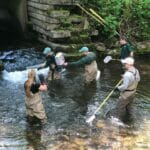
Trout Unlimited staff and Ashokan-Pepacton chapter members assisted NYS Department of Environmental Conservation in completing the East Branch Delaware River Trout Habitat Improvement Project (HIP). The project underway since 2016, was designed to better understand potential challenges facing trout in the watershed and to help develop mitigation and management strategies to reduce potential water quality and movement impacts caused by the Lake Wawaka dam in Halcottsville, NY. The project, spearheaded by concerned local…
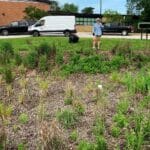
By Jamie Vaughan Hairy Penstemon is blooming at the Parkside Elementary Rain Garden in Michigan. This rain garden is a type of green infrastructure utilizing native plants to help developed areas function more naturally, thus keeping polluted and warmed stormwater runoff out of Rum Creek. We were out in the community with Abigail Henschell (pictured above),…
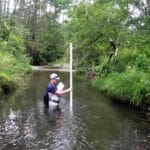
By Jacob A. Fetterman When I decided to change my major toward the end of my freshman year at Lock Haven University, I had no idea about the journey to follow. I was looking for a career that would allow me to positively impact the natural world I grew up admiring. Five-and-a-half years later, it is safe to say that I am well…
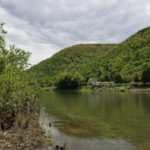
By Shawn Rummel The West Branch Susquehanna drains an area of approximately 7,000 squares miles in north-central Pennsylvania, a watershed that’s double the size of Yellowstone National Park. Due to the large amount of public land in the basin —more than one-third is state forest, state park, or state game lands — it is a tremendous…
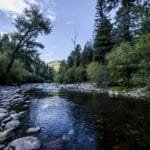
Contacts: Dan Roper, New Mexico State Lead, Trout Unlimited, dan.roper@tu.org Ivan Valdez, Owner, The Reel Life Fly Shop, Santa Fe, NM – ivanjvaldez@yahoo.com Santa Fe, NM – The U.S. Department of the Interior (DOI) and the U.S. Department of Agriculture (USDA) announced today that approximately 166,000 acres of public land in the headwaters of New Mexico’s…
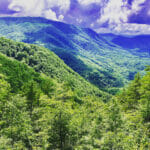
Standing atop a newly installed bridge over Wolf Creek, deep in Tennessee’s Cherokee National Forest, Brett Yaw and Sally Petre were both smiling proudly.
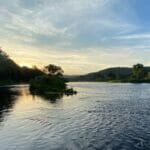
As infrastructure to support natural gas extraction expanded across the Appalachians over the past decade, the Delaware River Basin remained untouched as the group responsible for the coordinated management of the watershed considered the practice. Now, after years of uncertainty, a vote by the Delaware River Basin Commission has formalized a ban on high-volume hydraulic fracturing — often called “fracking” — in the basin. In a special business meeting on Feb. 25, 2021, commissioners…
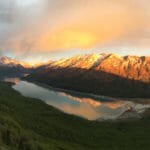
While you and your family think through fall outings, we would like to encourage you to take a trip to the Eklutna River valley – we created a family field trip for the Eklutna River watershed so that your family can learn while exploring the area
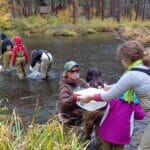
Students have connected to our restoration projects and helped us improve sections of 5 watersheds and 50 river miles for our fish and wildlife. Our goal has been to inspire students to study their local river, appreciate the unique habitat, and empower our youth and families to care for each river now and into the future.
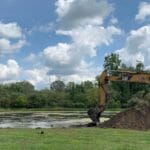
By Jamie Vaughan Trout Unlimited and local partners recently completed construction on a wetland restoration in downtown Cedar Springs, Mich. With help from a grant from the Michigan Department of Environment, Great Lakes, and Energy (EGLE) this is the second wetland restoration that Trout Unlimited has implemented in this community, which is home to Cedar Creek, an important coldwater tributary to the Rogue River. …
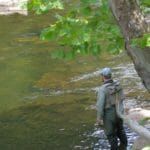
Contact: Katy Dunlap, Trout Unlimited Eastern Water Project Director, 607-742-3331 Mark Taylor, Trout Unlimited Eastern Communications Director, 540-353-3556 FOR IMMEDIATE RELEASE Savage River watershed one of 10 special places WASHINGTON, D.C.Trout Unlimited is featuring the Savage River watershed in a new report highlighting outstanding public fishing and hunting areas in the Central Appalachian region that…
Contact: Rebecca Dunlap: 570-367-8519, rdunlap@tu.orgTU Eastern Abandoned Mine Program For Immediate Release: Study Shows West Branch Susquehanna Watershed is Improving Restoration work leads to better water quality and more fish. LOCK HAVEN, Pa.A study conducted by TU shows that the overall health of the West Branch Susquehanna River and its tributaries has greatly improved, compared…
4/1/2000 Trout Unlimited Applauds DEC Plan for Beaverkill Watershed Trout Unlimited Applauds DEC Plan for Beaverkill Watershed Plan follows up on six-year TU study and sets path for new wild fish management program for Catskill Region Contact: 4/1/2000 — — Contact: Jock Conyngham: TU BeaMoc Project Manager, 207.846.9189 Nat Gillespie: TU Catskills Coordinator, 607.498.5960 April…
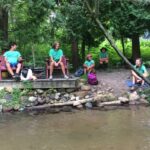
By Jamie Vaughan While the COVID-19 pandemic has halted many programs this summer, Trout Unlimited staff in Michigan are pleased to continue the Green Team program for its sixth year, employing high school students from across the Rogue River watershed to learn about and take part in watershed restoration projects. The Trout Unlimited Green Team was established in 2015 and grew out of…
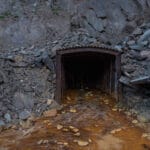
Bipartisan “Good Samaritan” legislation will pave the way for long-awaited cleanups of toxic mine waste Contacts: WASHINGTON, D.C. – Today, in a historic bipartisan achievement two decades in the making, the U.S. House of Representatives passed the Good Samaritan Remediation of Abandoned Hardrock Mines Act (S.2781 / H.R.7779). The legislation is expected to be signed…
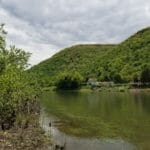
By Shawn Rummel The West Branch Susquehanna drains an area of approximately 7,000 squares miles in north-central Pennsylvania, a watershed that’s double the size of Yellowstone National Park. Due to the large amount of public land in the basin —more than one-third is state forest, state park, or state game lands — it is a tremendous…
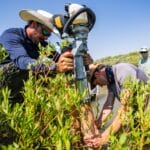
Contact: Nick Gann, Rocky Mountain Communications Director, Trout Unlimited – nick.gann@tu.org Trout Unlimited media resources: https://tu.org/about/media CHEYENNE, WY – Earlier today, Trout Unlimited (TU) launched a new film, “Lifeblood,” celebrating the collective work and partnerships needed to revitalize Muddy Creek, an important tributary of the Colorado River Basin located south of Rawlins, Wyoming. For decades,…
















